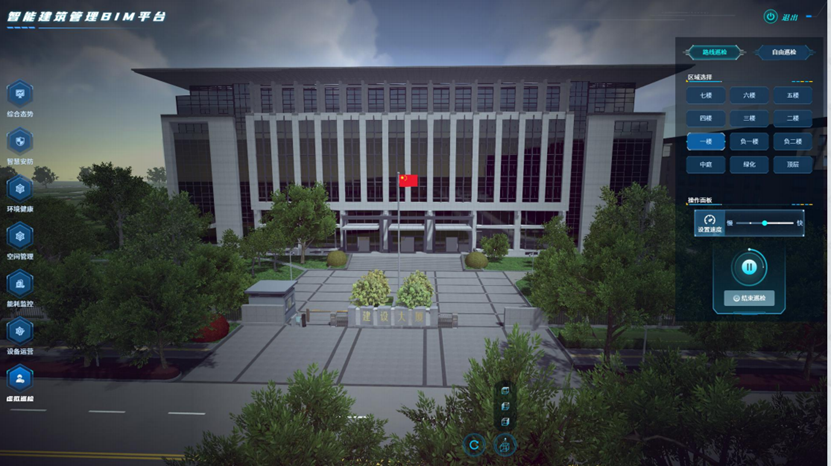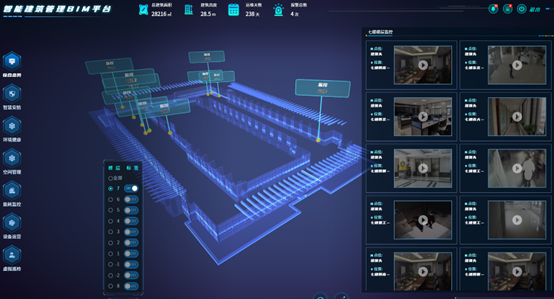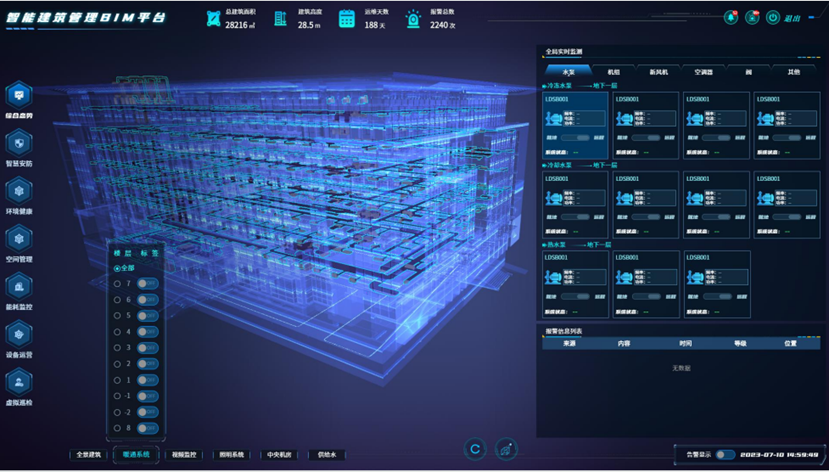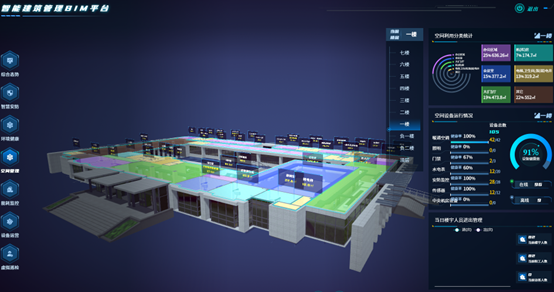Smart Building Platform
1 Introduction
The Smart Building Platform integrates technologies such as the Internet of Things (IoT), the Internet, 3D rendering technology, and Building Information Modeling (BIM) to construct holographic twin scene models for specific scenarios. This enables precise modeling, digital representation, real-time data display, and a series of intelligent functions for user scenarios, ultimately creating a comprehensive, intelligent integrated management platform that facilitates data convergence and sharing.

2 Platform Features
The platform features a high level of visualization, with a powerful built-in 3D game engine used for rendering user scenarios. It not only accurately reproduces the scenes but also visualizes data changes and dynamic characteristics that are invisible to the naked eye, thereby providing a comprehensive and clear display of the temporal and spatial variations in user scenarios. Additionally, the platform is equipped with a highly compatible and stable data middleware that supports the management of various types of equipment and facilities, including multiple specialized systems such as energy, fire safety, and environmental management, while also being compatible with mainstream IoT and communication protocols. After initialization, the platform can be easily expanded to monitor additional objects through a configurable approach.
3 Integrated Situational Virtual Digital Twin Scene Control Interface
The integrated situational virtual digital twin scene control interface supports loading comprehensive three-dimensional structural models of equipment and facilities, civil engineering, ventilation, drainage, and other specialized elements. It constructs a three-dimensional digital twin scene and enables unified management of all models in a layered manner based on specific topics.

4 Equipment Monitoring
The platform interfaces with the real-time database to obtain real-time power data and switch statuses for devices such as air conditioning units and lighting terminals, which are then displayed on the platform. It also supports remote operations. Additionally, the platform retrieves video streams from surveillance cameras via a video stream protocol, allowing users to navigate based on installation locations for real-time monitoring management. Finally, the platform monitors the operational status of the central machine room, including the number of operational days, CPU performance, server storage, and UPS system monitoring, while also processing equipment alarm information in real time.


5 Space Management
The space management module evaluates the building's space usage by statistically analyzing space utilization, equipment operating health rates, and personnel entry and exit conditions. It conducts data analysis on the actual usage of each room and displays the current space utilization rate on models, visually presenting the utilization of different types of rooms (such as office areas, meeting rooms, lobbies, etc.) in chart form. Additionally, it monitors space operation status by connecting to PLC devices to compare data for determining equipment health rates and uses access control systems to obtain and analyze the number of people entering and exiting the building.


